Cosmic Curiosities
“There is every reason to believe that Mars and other planets are inhabited. Why should the Earth be the only planet supporting human life? It is not singular in any other respect."
- Albert Einstein
A Story of Life on the Sun
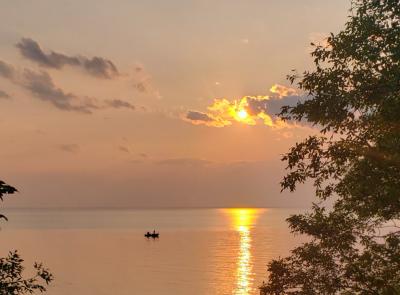 The dog days of August can be stifling; we really feel the heat from the sun. It makes me wonder: How can anyone—especially a very smart astronomer!—ever think life would exist on our blistering star? This story goes back more than 200 years.
The dog days of August can be stifling; we really feel the heat from the sun. It makes me wonder: How can anyone—especially a very smart astronomer!—ever think life would exist on our blistering star? This story goes back more than 200 years.
William Herschel lived in England. He started life as a musician, writing 24 symphonies. He became director of the Bath orchestra (about 100 miles west of London). Starting in the early 1770s, Herschel began wondering about nature and the sky. His readings and keen curiosity led him to build reflecting telescopes. It is said he spent 16 hours a day grinding and polishing the mirrors to collect and focus the light of stars and planets. His sister, Caroline, and brother, Alexander, assisted him in these efforts.

When he was 35 years old, Herschel discovered seasons on Mars by the changes in the polar ice on the red planet. He mapped out the Milky Way galaxy and the sun’s position, which was not at the center. He looked deeper into space, uncovering 2,400 objects he defined as nebulae. More than 100 years later, many of these dusty nebulae turned out to be distant galaxies, when astronomers had a better understanding of the universe—and better telescopes.
William Herschel’s biggest find was Uranus in 1781—which he called Georgium Sidus, or George’s star, after England’s King George III. Of course, this name did not sit well with other countries, and the name of Uranus—from the ancient Greek deity of the sky—was finally accepted 70 years later.
Another curious note when finding Uranus was that Herschel first thought it was a comet. Months later, he wrote, "I don't know what to call it. It is as likely to be a regular planet moving in an orbit nearly circular to the sun as a comet moving in a very eccentric ellipsis. I have not yet seen any coma or tail to it." It took two more years and the help of many other astronomers to finally get Herschel to accept that he had discovered a new planet.
Herschel’s sister, Caroline, discovered eight new comets. His son, John, also became a renowned astronomer and continued much of his father’s telescopic work, especially in the southern hemisphere. With all these accomplishments by Herschel and his family, he also concluded that life existed on the sun! Given his esteemed scientific status, other people listened, and many accepted his reasoning.
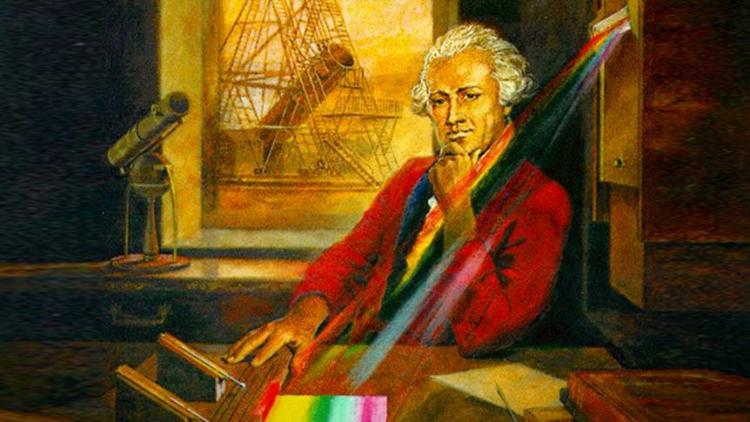
Herschel surmised the sun was encircled by an extremely hot atmosphere. The dark spots, or sun spots, were thought to be “holes” that led to a solid surface below. On this land were, as Herschel described, “beings whose organs are adapted to the peculiar circumstances of that vast globe.” To answer critics who said the sun would be way too hot for life, Herschel said there was another atmospheric layer—a much darker one below the bright one we see. This dark layer provides protection to the sun’s inhabitants.
Our story concludes with finding out why Herschel thought life was possible on the sun:
The answer is the times. Back in the late 18th century, many scientists thought the known planets had some sort of life. And that long ago, many people still thought the sun went around the Earth, and therefore it was a planet as well. Given these times, Herschel’s idea was not that crazy.
It wasn’t until the 1920s that we discovered what powered the sun and its blistering temperatures were revealed and accepted as fact. At 10,000 degrees Fahrenheit at its surface and a temperature of 27 million at its core, life on the sun today seems next to impossible.
A Speedy Look at Speed
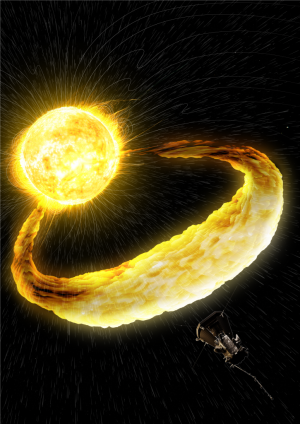
Back on August 9, NASA's Parker Solar Probe came within 6.5 million miles of the sun’s surface, enduring our star’s scorching temperatures and radiation. The spacecraft’s top speed was 330,000 miles per hour, or 91 miles per second. It was the fastest ship ever built by humans. That impressive velocity is the same as going from Chicago to Milwaukee in one second, or circling the entire Earth in four minutes! We have come a long way.
Back before we built anything to expedite our travel, we walked (or maybe ran if we were late or fleeing someone). A walking speed of three to four miles per hour is typical for most people. The fastest any human ran is 27.78 mph. That was done by sprinter Usain Bolt from Jamaica in the 2009 World Championships. Of course, Mr. Bolt’s “bolt” was only 100 meters. The world’s faster marathoners (26.2 mile race) run about 13 miles per hour.
Our first aid in transportation was the boat, to cross water. This started about 60,000 to 40,000 years ago with rafts and canoes. Speeds were similar to walking—just a few miles per hour. The first sailboats came along about 6,000 years ago and sped along at around five to seven miles per hour depending on the wind speed.
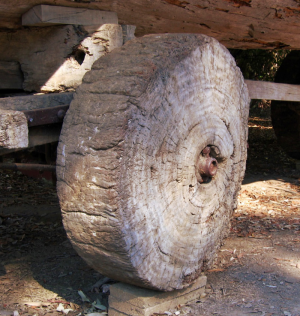
Horses and wheels both came next, around 4,000 years ago. Horses can gallop around 25-30 miles per hour, but that aped can only be sustained for short distances. The first wheels assisted mostly with the advent of agriculture. They also helped immensely with labor for machines such as a windmill or a potter’s wheel. They were not used for long distance travel until much later.
Steam increased our quickness quite a bit. Boats took advantage of this quickly in the late 18th century. America’s Robert Fulton improved this technology and was the first to take passengers in 1807. To go 150 miles from New York City to Albany on the Hudson River took 32 hours, or about five miles per hour.
The locomotive was the first steam engine to traverse the land. The first one was called the “Puffing Devil” in 1801 and averaged less than 10 mph. Steam was the main power for locomotives until after World War II when diesel and electric motors became more common. By the year 1900, trains were capable of going over 100 mph. Today, some magnetic levitation (maglev) trains travel close to 400 mph.
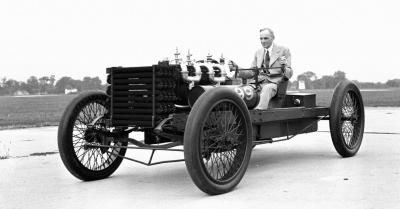 In 1904, Henry Ford made a car that achieved a speed of 91.37 mph. The racers at Indianapolis 500 today take about 40 seconds to complete one 2.5 mile lap. This calculates to 225 miles per hour.
In 1904, Henry Ford made a car that achieved a speed of 91.37 mph. The racers at Indianapolis 500 today take about 40 seconds to complete one 2.5 mile lap. This calculates to 225 miles per hour.
For airplanes, we know Orville and Wilbur Wright flew in the first powered flight in 1903. Orville piloted the plane for 12 seconds while his brother Wilbur ran alongside. It was calculated the plane flew 30 miles per hour for 12 seconds. Somehow, though, I don’t see Wilbur running that quickly!
In 1947, Chuck Yeager sped past the demon—the sound barrier. Many said this feat was impossible. But Yeager flew the X-1 at 662 mph 40,000 feet over Southern California to attain the fastest speed yet by a human, creating a sonic boom. For normal atmospheric conditions and temperature near the Earth’s surface, the speed of sound is 770 mph.
Today, an average commercial flight zips along at over 500 mph. The Lockheed SR-71 Blackbird is the fastest jet aircraft reaching speeds of 2,100 mph.
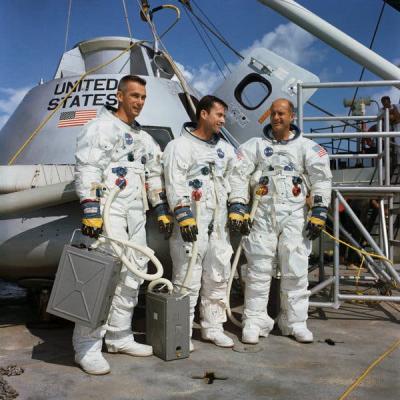 Ten years later in 1957, humans made it to space with the USSR’s Sputnik satellite. Yuri Gagarin became the first person to orbit planet Earth. His 90-minute orbit meant he was zipping along at 17,500 miles per or, or five miles per second.
Ten years later in 1957, humans made it to space with the USSR’s Sputnik satellite. Yuri Gagarin became the first person to orbit planet Earth. His 90-minute orbit meant he was zipping along at 17,500 miles per or, or five miles per second.
The American Apollo astronauts are still the fastest humans. Their speed came close to 25,000 miles per hour, or 7 miles per second. To be specific, Apollo 10 astronauts own the fastest traveling time at 24,816.1 mph on their trans-Earth return flight on May 26, 1969. Their names are Thomas Stafford, Eugene Cernan, and John Young.
Before the Parker Solar Probe, the New Horizons spacecraft that flew past Pluto achieved speeds of more than 36,000 miles per hour, or 10 miles per second. With the help of Jupiter’s gravity, the Juno spacecraft reached a speed over 150,000 miles per hour with respect to Earth, over 40 miles per second.
Our speedy journey on speed is not quite done: The Parker Solar Probe is going to get even faster as it gets even closer to the sun. It is making multiple orbits around the sun that bring its proximity closer and closer. The sun’s supreme gravity will keep increasing its speed records.
By 2025, at its closest approach, Parker will be traveling at a top speed of 440,000 mph or 120 miles per second. Extremely fast—but that still is only 0.064% the speed of light!
Harvest Moon Effect
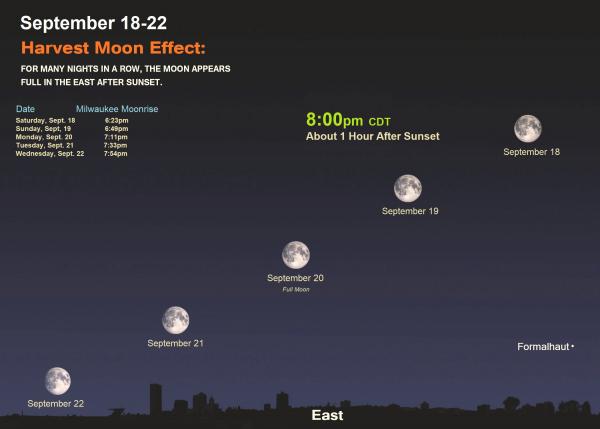 The Harvest Moon is the closest full moon to the first day of fall, or the autumnal equinox. This year, they are very close: Autumn arrives on September 22 at 2:21 p.m. CDT and the full moon is the night of September 20.
The Harvest Moon is the closest full moon to the first day of fall, or the autumnal equinox. This year, they are very close: Autumn arrives on September 22 at 2:21 p.m. CDT and the full moon is the night of September 20.
The Harvest Moon Effect is when we appear to have full moons on successive nights. Why? Due to the Earth’s tilt as it orbits the sun, the moonrise is only 20 to 30 minutes later in the fall. Normally, it’s close to an hour! With the quicker moon rises, it looks full for many nights in a row.
Fall is the time of the harvest. This extra moonlight would help farmers bring in their crops. Today, with modern lighting technology, this extra moonlight isn’t needed as much as it was long ago.
Sky Sights
Click maps to enlarge.
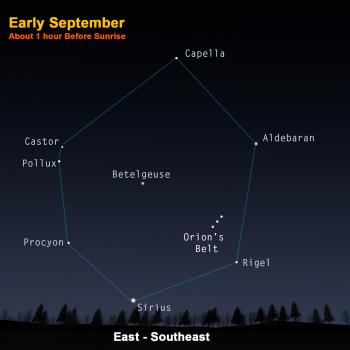 In late summer, it is hard to think of winter being on the horizon. But if you are an early riser, you will see the same stars before dawn that you will see in December after sunset!
In late summer, it is hard to think of winter being on the horizon. But if you are an early riser, you will see the same stars before dawn that you will see in December after sunset!
The winter hexagon, or winter circle, has seven bright stars. There are many more inside the outline when you look for the constellation of Orion.
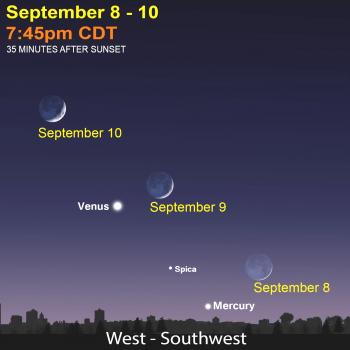 Mercury will be very difficult to see this month, but much brighter Venus and a sliver Moon might help. Step out about 30-45 minutes after sunset and observe low in the western sky from September 8-10.
Mercury will be very difficult to see this month, but much brighter Venus and a sliver Moon might help. Step out about 30-45 minutes after sunset and observe low in the western sky from September 8-10.
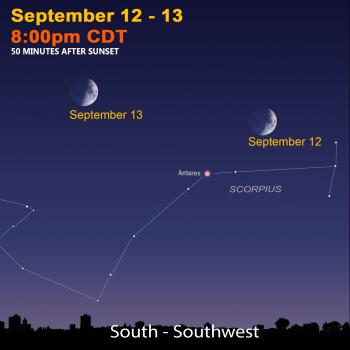 A waxing quarter Moon passes by the bright red star Antares in Scorpius from August 12-13.
A waxing quarter Moon passes by the bright red star Antares in Scorpius from August 12-13.
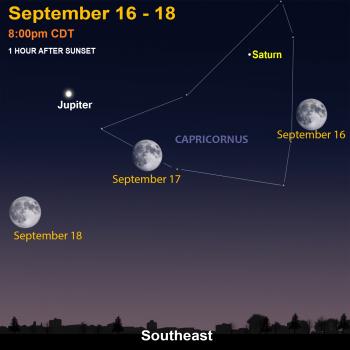 Jupiter and Saturn are joined by a near full moon from September 16 to 18 in the constellation Capricornus.
Jupiter and Saturn are joined by a near full moon from September 16 to 18 in the constellation Capricornus.
September Star Map
Sign Up
Receive this newsletter via email!
Subscribe
See the Universe through a telescope
Join one of the Milwaukee-area astronomy clubs and spot craters on the Moon, the rings of Saturn, the moons of Jupiter, and much more.
Follow Bob on social media
Twitter: @MPMPlanetarium
Facebook: Daniel M. Soref Planetarium

